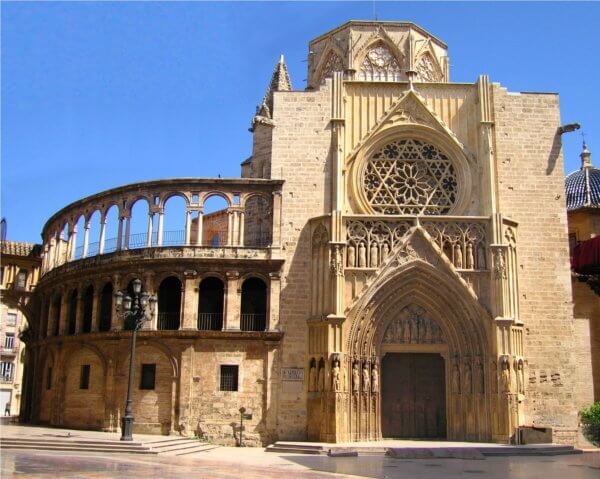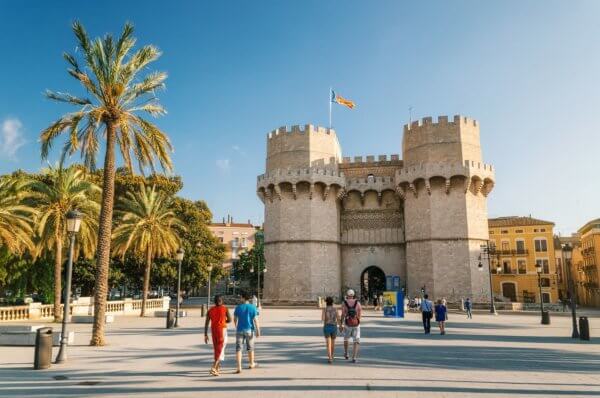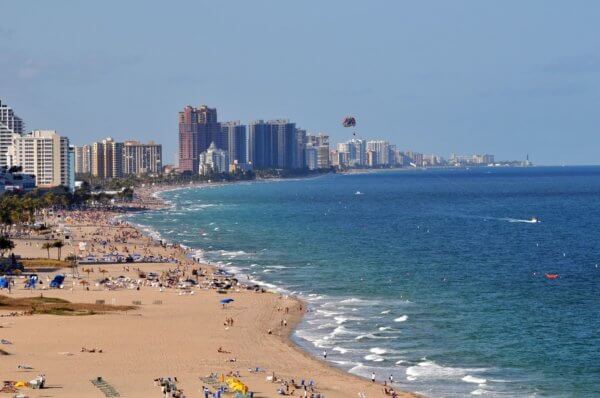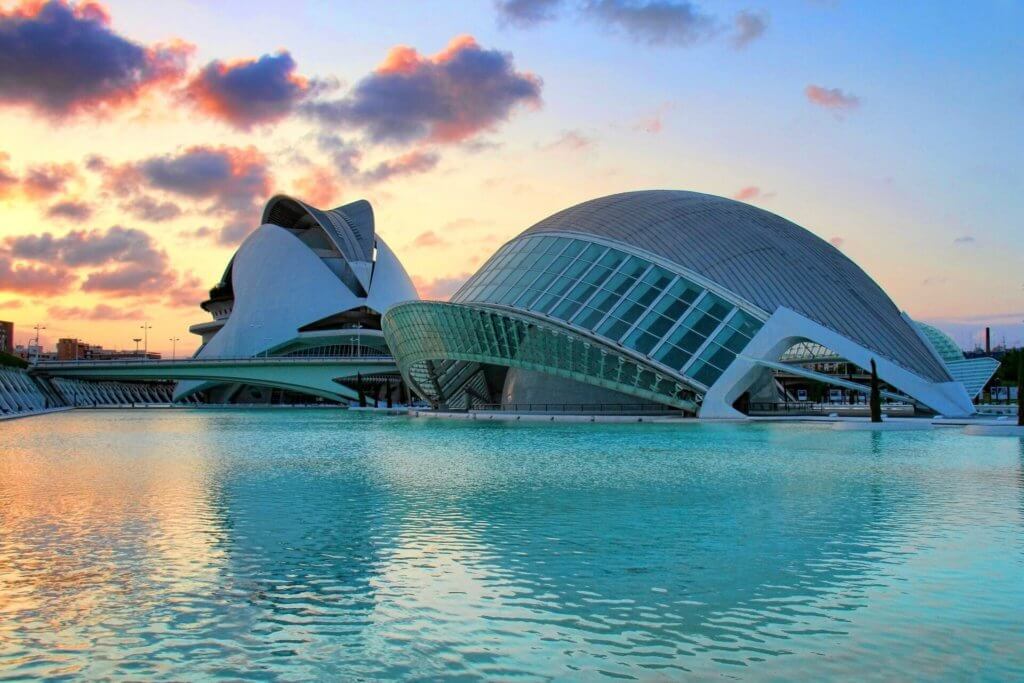Valencia is the third largest city in Spain and one of the most important in the Mediterranean. Until a few years ago, a place visited only by the most attentive travelers, after the America’s Cup Valencia became famous all over the world, with evident influences on the architecture, the organization of the city, the number of tourists around and the cost of hotels. (leavened a lot). As happened for the Olympics in Barcelona, this event also gave new life to Valencia, creating a mix of creativity and energy that contributed to the Valencian explosión.
Several places not to be missed and things to do: the Cathedral (it seems that it contains the Holy Grail), the City of Science and the Arts (unmissable), the Barrio del Carmen with its student nightlife and a good plate of Valencian paella , the true and only paella, which you will not find anywhere else in Spain. Read the next page to find out about the 10 things you absolutely must do during a weekend or holiday in Valencia. Also find out how to get to and around Valencia.
 The Cathedral of Valencia
The Cathedral of Valencia
Built in the thirteenth century, the Cathedral stands in a place considered “sacred” in which a Roman temple had already risen before and a Muslim mosque later. The visit should start from the Miguelete, the tower that overlooks the Cathedral and offers an overview of the entire historic center. It’s 270 steps but it’s worth it! But what attracts tourists is the Holy Grail: the chalice that Jesus seems to have used at the Last Supper and kept inside the Cathedral. Another of the Cathedral’s jewels are the Renaissance frescoes of the High Altar, rediscovered by chance 10 years ago. The paintings were commissioned by Pope Alexander V Borgia, to the Italians Paolo da San Leocadio and Francesco Pagano. The frescoes depict twelve angels playing musical instruments of the time.
The City of Arts and Sciences in Valencia
The project of this huge complex, a significant example of modern architecture, is thanks to the architect Santiago Calatrava.
The City of Arts and Sciences contains five spectacular attractions: the Oceanografic, the Umbracle, the Palace of Arts, the Science Museum and the Hemisfèric. In a predominance of white, each element that makes up the City of Sciences is built in a different style, but creating a perfect overall harmony. It will be impossible for you to be able to visit the whole structure in a single day, but its spectacularity deserves the opportunity to “waste” a few more days.
Timetable and cost of the ticket for the City of Science
Opening hours: The City of Science of Valencia is open every day from 10am to 7pm. In summer some attractions stay open until 9pm. mid day.
 The Barrio del Carmen in Valencia
The Barrio del Carmen in Valencia
The Barrio del Carmen, over the course of its millenary history, has performed different functions: from refuge to barracks to a place of prostitution to the center of the medieval aristocracy up to being a working-class district in 1900. Today it is one of the busiest places in the city, both day and night. In the morning it is the place for shopping, among alternative shops and ateliers of big brands, at night it is the favorite place for young people who come to relax after a day of study or work, entertaining themselves in the various cafes that populate the neighborhood and going ‘de copas’.
The Lonja de la Seda in Valencia
The Lonja de la Seda (Silk Market) was born as an emblem of the golden age of Valencia, it was the center of commercial and cultural activities at the beginning of the 16th century.In 1996 it was declared a World Heritage Site by Unesco , as one of the finest and best preserved examples of late Gothic architecture in Europe. A construction that on the one hand frightens with the grandeur of its structure, but on the other seduces with the elegance of its ornaments. La Lonja is now home to the Cultural Academy of Valencia, often home to exhibitions, as well as one of the obligatory stops during a visit to the city.
 The port, the beaches and the Reserve of Valencia
The port, the beaches and the Reserve of Valencia
After decades in which the port and industrial activities had created disasters, Valencia has taken back the sea and the beaches. The port area, now called Marina Real Juan Carlos I, has been redeveloped.
From the “Veles e Vents” building you can admire a splendid view of the sea and enjoy the sun in complete relaxation. From here starts a nice walk along the seafront that leads to the city beaches of Les Arenas and Malvarrosa with clear water awarded by the European Blue Flag. If you love nature, not far away is the Albufera Reserve, the largest lake in Spain. You can get there with line 25 of the city buses, in less than an hour and for only € 1.50 each way. There is also the Albufera Bus Turistic that allows you to explore the park in detail.

